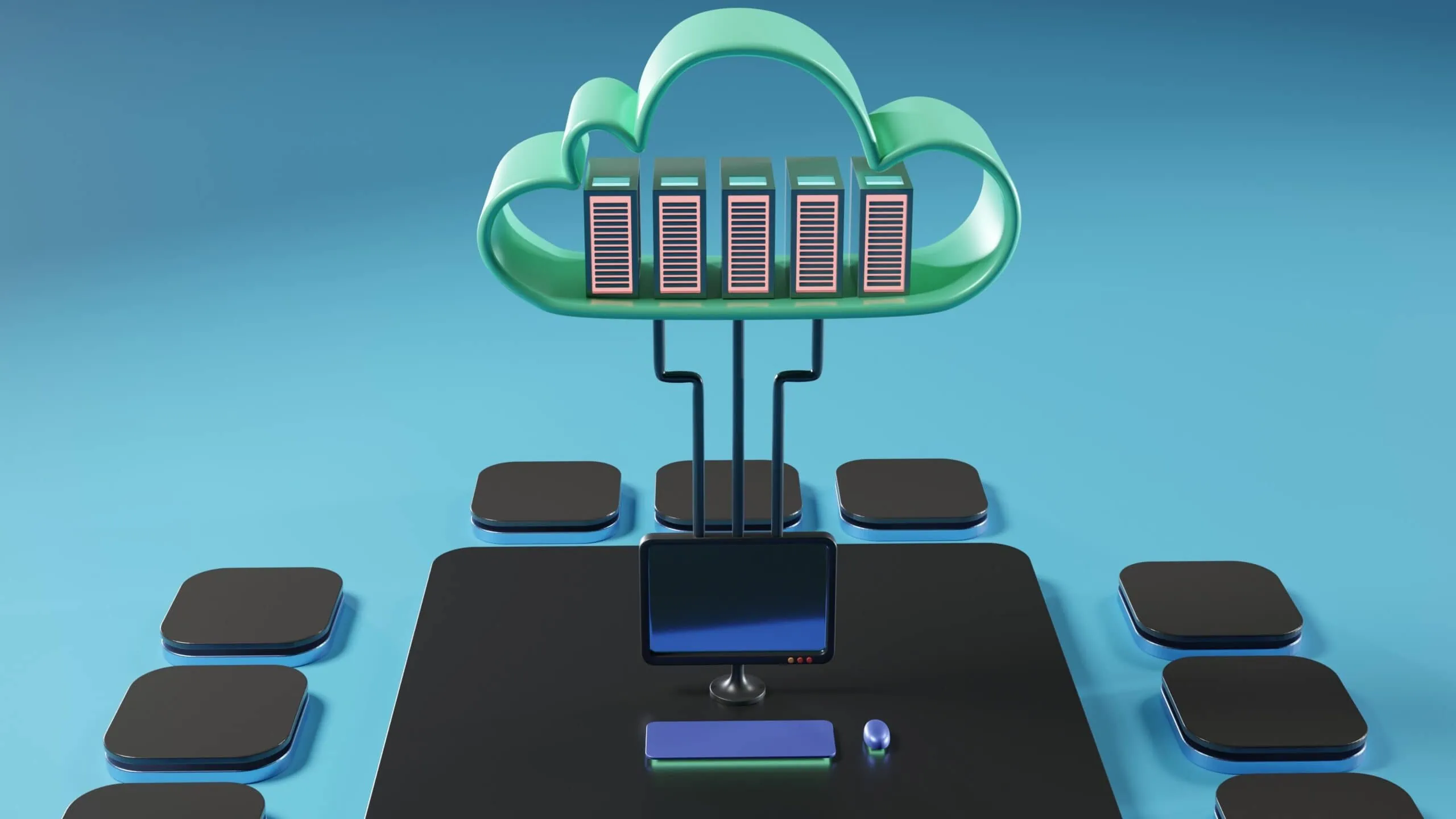Introduction : How is cloud computing different from traditional computing?
How is cloud computing different from traditional computing? In today’s digital era, cloud computing has become a buzzword in the tech industry. It is a technology that has revolutionized the way we store, process, and access data. But what exactly is cloud computing, and how is it different from traditional computing?
Cloud computing is a method of delivering computing services, including servers, storage, databases, networking, software, analytics, and intelligence, over the internet. In contrast, traditional computing involves using a physical computer or server to store and process data. The key difference between the two is that cloud computing provides on-demand access to shared resources, whereas traditional computing requires physical hardware and software to be installed on-site. This blog post will explore the differences between cloud computing and traditional computing in more detail.

The Key Differences Between Cloud Computing and Traditional Computing
Cloud computing and traditional computing are two different ways of storing and accessing data. In traditional computing, data is stored on a physical device like a hard drive or USB drive. In contrast, cloud computing stores data on remote servers that can be accessed through the internet.
One of the key differences between cloud computing and traditional computing is the level of control. With traditional computing, the user has complete control over their data and the device it is stored on. In contrast, cloud computing gives the user less control over their data since it is stored on remote servers. Another difference is the level of maintenance required. With traditional computing, the user is responsible for maintaining their device and ensuring that it is secure. Cloud computing, on the other hand, is maintained by the cloud provider, which can save time and resources for the user.

Why Cloud Computing is Revolutionizing the IT Industry
Cloud computing has become a buzzword in the IT industry, and for good reason. It refers to the delivery of computing services over the internet, including storage, servers, databases, software, and more. Cloud computing has revolutionized the IT industry by providing a cost-effective, flexible, and scalable solution to businesses of all sizes.
One of the main benefits of cloud computing is its scalability. Businesses can easily scale up or down their computing resources based on their needs, without having to invest in expensive hardware and software. This makes it easier for businesses to grow and adapt to changing market conditions. Additionally, cloud computing provides a level of flexibility that traditional IT infrastructure cannot match. Businesses can access their data and applications from anywhere in the world, as long as they have an internet connection. This has made remote work more accessible and has allowed businesses to operate more efficiently. Overall, cloud computing has transformed the IT industry by providing businesses with a cost-effective, flexible, and scalable solution to their computing needs.

Understanding the Advantages of Cloud Computing Over Traditional Computing
Cloud computing is the new buzzword in the world of technology. It is a revolutionary way of storing and accessing data and applications over the internet. Unlike traditional computing, where all the data and applications are stored on a local server, cloud computing stores the data and applications on remote servers that are accessed over the internet. This has several advantages over traditional computing.
Firstly, cloud computing is highly flexible and scalable. It allows businesses to scale their computing resources up or down as per their needs. This means that businesses can easily add or remove computing resources as per their requirements, without having to invest in expensive hardware or software. Secondly, cloud computing is highly cost-effective. It eliminates the need for businesses to invest in expensive hardware and software, as all the computing resources are provided by the cloud service provider. This means that businesses can save a lot of money on their IT infrastructure and maintenance costs. Lastly, cloud computing is highly secure. It provides businesses with advanced security features, such as data encryption, access controls, and firewalls, to ensure the safety and security of their data and applications.

How Cloud Computing is Changing the Way Businesses Operate
Cloud computing has revolutionized the way businesses operate. It has made it possible for businesses to access their data and applications from anywhere in the world, as long as they have an internet connection. This has allowed businesses to become more flexible and agile, as they can now work from anywhere and collaborate with their teams in real-time. Cloud computing has also made it easier for businesses to scale their operations, as they can quickly add or remove resources as needed.
Another way cloud computing is changing the way businesses operate is by reducing their IT costs. With cloud computing, businesses no longer have to invest in expensive hardware and software, as they can simply pay for what they need on a subscription basis. This has made it possible for small businesses to compete with larger ones, as they can now access the same technology without having to make a huge upfront investment. Overall, cloud computing has made it possible for businesses to operate more efficiently and effectively, and it has opened up new opportunities for growth and innovation.

Cloud Computing vs. Traditional Computing: Which One is Right for Your Business?
When it comes to choosing the right computing system for your business, there are two main options to consider: cloud computing and traditional computing. Cloud computing is a newer technology that allows you to access your data and applications over the internet, while traditional computing involves using physical hardware and software installed on your own computer or server.
So, which one is right for your business? It depends on your specific needs and preferences. Cloud computing offers the benefits of scalability, flexibility, and cost-effectiveness, as you only pay for what you use and can easily scale up or down as needed. On the other hand, traditional computing may be better for businesses that require more control over their data and applications, as well as those with specific security or compliance requirements. Ultimately, it’s important to carefully consider your options and choose the system that best meets your business needs.

The Pros and Cons of Cloud Computing Compared to Traditional Computing
Cloud computing is a technology that allows users to access data and programs over the internet. It has many advantages over traditional computing, such as lower costs, greater flexibility, and easier access to resources. One of the main benefits of cloud computing is that it eliminates the need for expensive hardware and software, which can be a significant cost savings for businesses. Additionally, cloud computing allows users to access their data and applications from anywhere, as long as they have an internet connection.
However, there are also some drawbacks to cloud computing. One of the main concerns is security, as data stored in the cloud can be vulnerable to cyber attacks. Additionally, there may be issues with data privacy and compliance, as some regulations require that data be stored in specific locations. Finally, there may be concerns about the reliability of cloud computing, as downtime can be a significant issue for businesses that rely on their data and applications to be available at all times. Overall, cloud computing offers many benefits over traditional computing, but it is important to weigh the pros and cons before making a decision.

Conclusion : How is cloud computing different from traditional computing?
In conclusion, cloud computing and traditional computing have significant differences that make them unique in their own ways. Cloud computing is a modern technology that allows users to access data and applications from anywhere in the world, while traditional computing involves storing data and applications on a local device.
The cloud offers a flexible and scalable solution for businesses of all sizes, allowing them to reduce costs and improve efficiency. On the other hand, traditional computing provides greater control and security, making it a preferred choice for some organizations. Therefore, it is important to understand the differences between these two technologies and choose the one that best suits your needs.
In summary, cloud computing and traditional computing are two distinct technologies that have their own advantages and disadvantages. While cloud computing provides greater flexibility and scalability, traditional computing offers greater control and security. Ultimately, the choice between these two technologies depends on your specific requirements and preferences.






